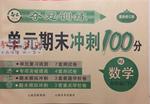题目内容
. ______ is quite natural; a beginner can't read the books written in English very quickly.
A. Which B. As C. What D. It
B

 夺冠训练单元期末冲刺100分系列答案
夺冠训练单元期末冲刺100分系列答案Social networking isn’t only for the under 40s. More than 25 percent of Americans 50 years and older stay connected using sites such as Facebook, MySpace and Twitter, according to new research.
“The latest data tells us that more and more social networking is becoming a part of everyday life for Americans 50 plus,” said Kevin Donnellan, the chief communications officer at AARP, which released (发布)the report.
Nearly a quarter of older Americans are on Facebook and 73 percent said they use it to stay in touch with relatives, but not just their children and grandchildren. “They are using the Internet to keep up with the world and the people who are important to them,” said Jean Koppen, the author of the report. She added that older adults are also on Facebook to stay connected, not only with their family, but with their friends and those in the same age group. Almost 50 percent of older adults were introduced to the social networking sites by a family member, mainly a child or grandchild. “Just under one-fifth of adults aged 50 and older say they do not use the Internet,” according to the report.
The findings are based on a telephone survey of 1,863 adults. In addition to keeping up on Facebook and Twitter older adults are aware of the latest technology. Eighty-three percent had heard about the Apple iPad and 11 percent intended to buy one.
Despite the popularity of the Internet among the over 50s, they still mostly go to print newspapers and magazines for news. Only one percent said they followed blogs.
1.What is the main idea of the text?
A.Social networking isn’t for the under 40s in the U.S.A.
B.American old people’s way of life is quite fashionable.
C.Social networking is becoming popular among older Americans.
D.Facebook, MySpace and Twitter are the most popular websites in the US.
2.Which of the following statements is TRUE according to the passage?
|
A.85% of Americans 50 plus choose the Internet over print media. |
|
B.About 460 people in the telephone survey often use Facebook. |
|
C.About 20% of adults aged 50 plus have access to (利用)the Internet. |
|
D.Three quarters of the people surveyed got to know the Internet through their family. |
3.Where does the text probably come from?
|
A.A novel. |
B.A newspaper. |
|
C.A technology guide. |
D.A student’s research paper |